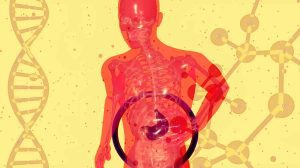What is gastroesophageal reflux? What is it caused by? What are his symptoms? How do you diagnose? How are you treated? Is this a one-time phenomenon? she will come back? Could there be complications? When is surgery needed? Instructions
What is gastroesophageal reflux disease?
Acid reflux disease (GERD, ) is a disorder in which acidic content, which normally remains in the stomach, rises from the stomach into the oesophagus and causes a burn in the inner lining of the oesophagus (the tube that connects the mouth to the stomach). Sometimes the stomach juices may even rise to the throat and mouth.
The increase in the acid content in the o oesophagus causes various symptoms that harm the patient’s quality of life, including heartburn. On top of that, the burn caused by the acidic content can cause long-term damage.
A survey conducted by the research company Gallup in the United States shows that 43% of the population suffers at least once a month from heartburn, which is the main symptom of GERD disease. 13% of the population – according to the same survey – take medicine for heartburn at least twice a week.
What causes reflux?
The most common reason for the passage of the acid from the stomach to the o oesophagus is a malfunction of the sphincter that separates the stomach from the oesophagus. This sphincter is a thickened muscle at the end of the o oesophagus that serves as a one-way valve.
There are other reasons for this disorder, including:
- The existence of a diaphragmatic hernia .
- Increased intra-abdominal pressure, for example as a result of obesity or pregnancy.
- Delay in emptying food from the stomach as a result of diseases such as diabetes .
- Delay in clearing the contents from the oesophagus as a result of its weak motility (peristalsis) or due to a reduction in the amount of mucus (mucus) secreted by the o oesophagus or due to a decrease in the amount of mucus that reaches the o oesophagus.
The effect of different types of food on the symptoms of GERD has been examined in several studies, but the conclusions obtained from them are not unequivocal.
Foods
Despite the inconclusive conclusions, it is now common to recommend that those suffering from the phenomenon avoid the following foods: coffee, chocolate, citrus fruit juices, garlic, onions, as well as spicy, spicy, fried and fatty foods.
Medicines
Certain medications can irritate the o oesophagus and cause heartburn. These are, for example, antibiotics from the tetracycline family (such as doxylin ), bisphosphonates (such as alendronate ) for the treatment of osteoporosis , iron supplements, pain relievers from the NSAIDS family (such as ibuprofen ) and potassium supplements.
Other drugs increase the movement of acid into the o oesophagus. These are, among others, the following drugs: anticholinergic drugs, antidepressants from the tricyclic family, calcium channel blockers (for treating high blood pressure and heart disease) such as nifedipine , drugs from the nitrate family for treating heart disease such as isosorbide mononitrate .
Patients suffering from GERD disease should consult with the pharmacist or treating physician regarding the effect of the medications they are taking – especially if they are medications they have been taking for a long time.
What are the symptoms of gastroesophageal reflux disease?
The stomach contents may harm the o oesophagus as well as nearby organs such as the lungs, pharynx and mouth. The fact that reflux symptoms are not limited to the o oesophagus sometimes makes it difficult to diagnose the phenomenon.
These are the common symptoms of gastroesophageal reflux disease :
- Heartburn – a burning sensation behind the breastbone (sternum) that can go up to the mouth. It should be remembered that almost everyone experiences heartburn from time to time, but when it appears twice or more a week and/or causes symptoms that impair the patient’s quality of life, it is considered a disease that must be treated.
- Regurgitation – passage of acid (stomach juices) or undigested food into the throat and into the oral cavity.
These are the less common symptoms of gastroesophageal reflux disease :
- Abdominal or chest pains.
- Difficulty swallowing (dysphagia).
- Pain in the throat, feeling of a lump in the throat, hoarseness and cough.
- Pneumonia.
- Nausea and vomiting.
- Phlegm and feeling of suffocation at night.
Due to these symptoms, the colloquial language has given different names to the GERD disease, including splenic reflux, stomach acidity, sleep suffocation reflux, and nocturnal reflux.
It should be noted that in 30% of patients who undergo cardiac catheterization due to chest pain, the results are normal. Most often, the cause of chest pains, mistaken for a heart problem, is GERD disease.
What are the warning signs that require an immediate visit to the doctor?
- Involuntary weight loss.
- Pain or difficulty swallowing.
- Prolonged vomiting.
- Bleeding in vomit or stool.
- Anemia and complaints of epigastric pain (pain in the upper abdominal area).
How do you diagnose?
A family doctor can diagnose gastroesophageal reflux disease by evaluating the typical and uncharacteristic symptoms of the phenomenon and with the help of a physical examination.
Another means at his disposal is the experimental administration of drugs of the hydrogen pump inhibitor (PPI) type such as omeprazole (trade names: Lusk, Ompredex, omeprazole, omezol) or lansoprazole (trade names: Lanton, Lansoprazole-Teva) or esomeprazole (trade name: Nexium) .
If the drugs lead to an improvement in the symptoms, this is a sign that it is, most likely, gastroesophageal reflux disease. However, it should be noted that recent studies show that the effectiveness of this method is lower than previously estimated, and it is possible that the relief of symptoms is not necessarily due to the use of drugs from the PPI family.
Patients taking these drugs to deal with gastroesophageal reflux disease are advised to try once a year to reduce the dose of the drugs from this family and see if this has an effect on the symptoms of the disease.
In cases where the symptoms are outside the oesophagus – such as chest pain and cough – it is recommended to undergo a comprehensive examination by an otolaryngologist and take a chest x-ray .
However, the main test that helps diagnose gastroesophageal reflux disease is an endoscopy of the upper digestive tract. In this test, an optical fiber is used that allows a direct look at the mucosa of the upper digestive system. The test is done under partial anesthesia with a numbing injection and lasts about ten minutes.
In the following cases, it is acceptable to do an endoscopy:
- If the experimental treatment with drugs from the family of hydrogen pump inhibitors has failed.
- In a patient suffering from Barrett’s oesophagus syndrome (a condition in which cells of the oesophagus become intestinal cells following prolonged exposure to acid originating from the stomach. This is a condition considered precancerous).
- For surgery in the upper part of the digestive system.
- If severe and frequent symptoms of gastroesophageal reflux disease appear.
- If you suffer for a long time from severe and frequent symptoms of gastroesophageal reflux disease.
- In a patient over 50 years old who comes to the family doctor because of symptoms the likes of which he has never experienced before and which are compatible with gastroesophageal reflux disease.
In special cases, the acidity of the oesophagus can be monitored for 24 hours. This test is called prolonged monitoring of esophageal acidity (Esophageal pHmetry) and is considered the test of choice for diagnosing gastroesophageal reflux disease. It is used in cases where the symptoms are unclear or before surgery.
What is the treatment for reflux?
Most patients suffering from gastroesophageal reflux disease will need drug treatment for the symptoms of the disease. However, in the first stage they will be advised to change their lifestyle.
Such a change includes, among others, the following actions:
- Ensuring regular physical activity.
- Avoiding smoking .
- Maintaining a normal body weight.
- Avoiding spicy, fried and spicy foods as well as avoiding foods high in fat, caffeine and alcohol.
- Avoiding large meals.
- Avoiding lying down immediately after a meal. Two to three hours before going to sleep you should completely avoid eating.
- It is advisable to sleep on a high pillow (so that the head is higher than the rest of the body).
In many cases, the doctor will also choose drug treatment to alleviate the symptoms of gastroesophageal reflux. It is common to treat gastroesophageal reflux disease with one or more of the following three drug groups:
- Antacids.
- Medicines from the family of histamine H2 receptor blockers.
- Medicines from the family of hydrogen channel blockers (PPI).
Antacids are preparations that contain salts that antagonize acids (such as magnesium , aluminum, calcium and sodium salts), and can be purchased without a prescription.
These are preparations such as Malox , Tams , Rani and Gabiscon. Sometimes these preparations also contain components from seaweed (alginate) that coat the stomach and neutralize the acidity (as the drug Gabiscon does).
Antacids alkalize the stomach juices and relieve the symptoms of mild to moderate heartburn and gastroesophageal reflux. The duration of their action is short, the onset of the effect is fast, so they are given several times a day or as needed.
They exist in both chewable tablets and suspension. Antacids do not prevent acid secretion and are therefore ineffective in cases of severe gastroesophageal reflux.
The family of histamine H2 receptor blockers includes drugs such as famotidine (brand names: Gastro, Pamo, and Famotidine-Teva) and ranitidine (brand names: Zantac and Zaridex ).
These drugs prevent the secretion of acid from the stomach cells and are more effective than antacids, partly because their action time is longer. The onset of their effect is not as fast as that of antacids, and in most cases they must be taken for a long time. They are given once or twice a day.
The family of hydrogen channel blockers (PPI) includes the most effective drugs for the treatment of gastroesophageal reflux disease.
These drugs act on channels in the stomach cells (hydrogen channels also called proton channels) and prevent acid secretion into the stomach. These are, among others, the following drugs: omeprazole, lansoprazole, esomeprazole, pantoprazole (trade name: Controlloc) and dexlansoprazole (trade name: Dexilant).
Doctors prescribe drugs from the PPI family in cases of moderate to severe gastroesophageal reflux. Usually the use of these drugs is intended for a period of several weeks, but in some cases they are given regularly, according to the discretion of the attending physician. With long-term use, you must be regularly monitored by your attending physician and a gastroenterologist and perform tests in accordance with their instructions.
how long does it last
The disease does not go away by itself: it is a chronic disease that requires regular treatment. Treatment includes lifestyle changes, medication and sometimes even surgery.
The drug treatment relieves in a short time the symptoms of gastroesophageal reflux disease, including heartburn.
Could there be complications?
Prolonged gastroesophageal reflux disease that is not treated can cause ulcers, inflammation and strictures in the oesophagus and even Barrett’s syndrome (also called “Barrett’s oesophagus”). This is, as already mentioned, a pre-cancerous change in the tissue of the oesophagus that may – rarely – turn into a malignant tumor in the oesophagus.
How do you learn to live with chronic gastroesophageal reflux disease or chronic inflammation of the digestive system?
It is important to adopt a healthy lifestyle that includes, among other things, maintaining a healthy weight, a low-fat diet, physical activity and avoiding smoking. These relieve heartburn and may prevent chronic heartburn. Maintaining a healthy lifestyle has, of course, many other benefits, including the prevention of heart disease and diabetes.
The medication can be taken as needed. Although it is permissible to take the medications for the treatment of gastroesophageal reflux for a long time, a better option is to prevent the need for them by changing the lifestyle. When you feel better, you can try to consider reducing or even stopping the drug treatment in collaboration with the attending physician.
What are the main reasons for choosing surgical treatment?
- Difficulty taking medication regularly.
- Reluctance to take medication regularly.
- Partial response to drug treatment, mainly in regurgitation (increase of juices or food into the oral cavity).
- Appearance of complications of gastroesophageal reflux disease.
What do we do in surgery?
The surgery was performed using a minimally invasive approach (laparoscopy). The esophageal transition area is examined and a diaphragmatic hernia is repaired – if it exists. On top of that, the gatekeeper area is strengthened by wrapping part of the stomach around the distal oesophagus. This operation is called fundoplication.












Add Comment